Departing from Ushuaia, Argentina, the southernmost city in South America, we embarked on an Abercrombie & Kent (A&K) cruise to Antarctica. With us was a crew of experts in their fields — research scientists, marine biologists and seasoned Antarctic guides. What unfolded was no mere travel experience, but a stark confrontation with the effects of global warming in one of Earth’s most remote, pristine environments.
In this piece, we delve into three critical aspects of the impacts of climate change in Antarctica’s landscape: the rising temperatures of the Southern Ocean, the diminishing capacity of the Antarctic ecosystem in mitigating carbon dioxide levels and the warming ocean’s impact on fauna populations. Despite the urgency of these issues, public awareness remains disturbingly low. Scientists sound the alarm, urging for greater attention and action. They recognize that the changes occurring in Antarctica have far-reaching consequences that are affecting communities across the world, and could become global disasters.
We also address the potential of conscious tourism as a powerful tool for conservation efforts. While the industry can introduce hazards to the Antarctic ecosystem, it offers promising opportunities for scientific research and public awareness. These should be considered in the endeavor to save the continent.

We depart from Ushuaia, Argentina. Authors’ photo.
Navigating climate change in Antarctica’s warming waters
We found ourselves cruising in the Southern Ocean, also known as the Antarctic Ocean. We were eager to experience the pure beauty of Antarctica firsthand. These expeditions primarily take place during Antarctica’s summer season, from December to February, when the weather is warmest and ice sheets don’t block ships. As we braved the ocean, a dramatic shift occurred around 60° South latitude. This is the Drake Passage, a narrow stretch of water between Cape Horn, Chile and the Antarctic Peninsula. Here, we entered the area known as the Antarctic Convergence Zone, which functions as a natural boundary for wildlife. In this zone, the Antarctic Circumpolar Current (ACC) meets the waters of the Pacific, Atlantic and Southern Oceans.
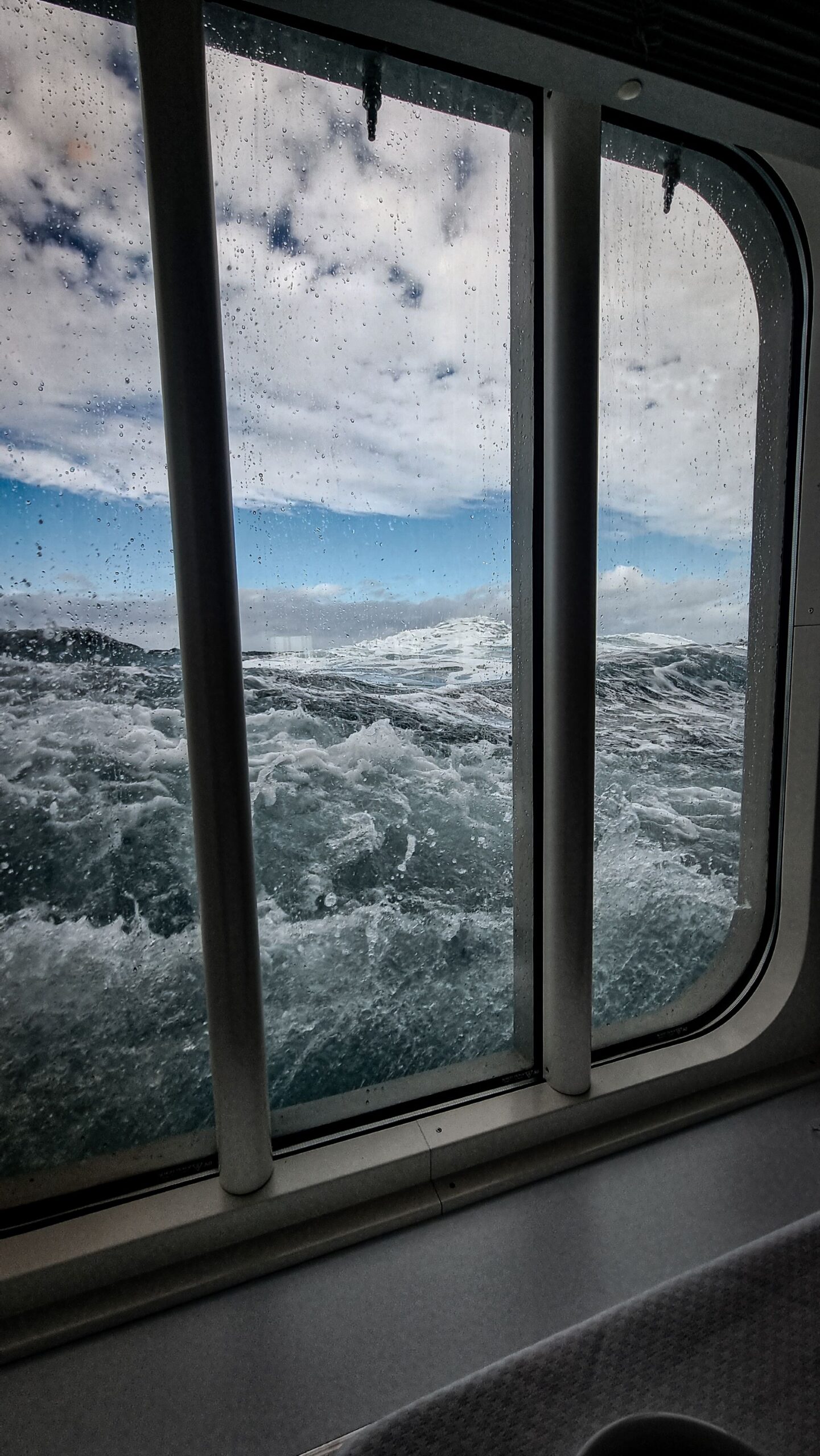
Rough seas in the Drake Passage batter the ship’s windows. Authors’ photo.
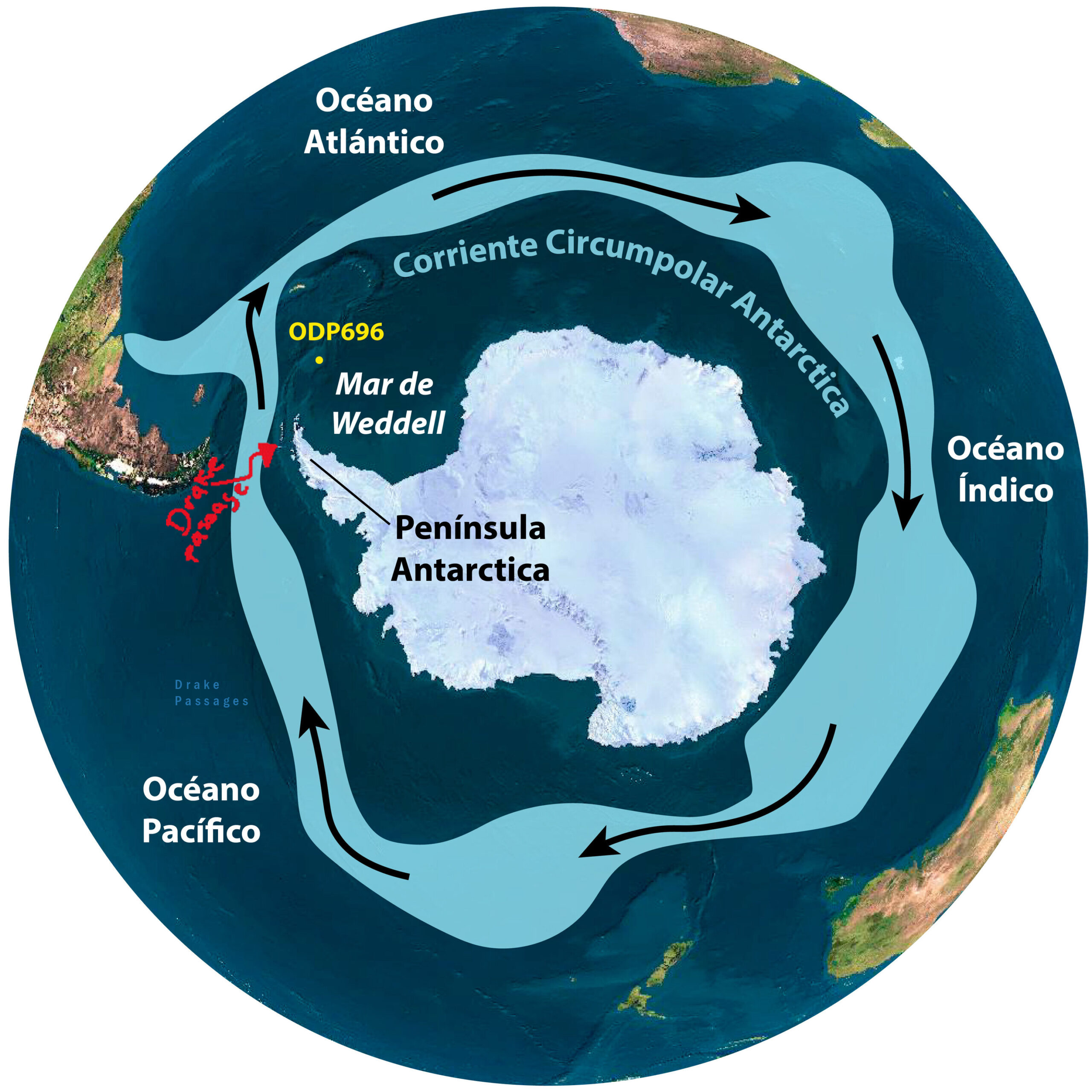
Antarctic Circumpolar Current (ACC) diagram. Via Phys.org.
Amidst this natural spectacle lies a troubling reality. Each summer reveals rising temperatures in Antarctica, highlighting the urgent need to combat climate change. Antarctic research stations have recorded unprecedented temperature highs in recent years. In 2020, Argentina’s Esperanza station marked a record high of 18.3° C (64.94° F). In 2022, the Concordia station, which is jointly operated by France and Italy, observed an alarming temperature peak of 47° C (116.6° F). These temperature fluctuations underscore the disturbing meteorological anomalies that are occurring in Antarctica.
The temperature peaks are disrupting the ACC, altering the exchange of carbon dioxide between the oceans and the atmosphere. This amplifies the warming and changes oceanic patterns. Moreover, as temperatures continue to rise, ice sheets in Antarctica melt rapidly. Since 2023, a substantial portion of Antarctic ice — equivalent to the size of Greenland — has melted away.
Antarctica’s global warming mitigation is in jeopardy
The melting of ice sheets is primarily attributed to the warming of the ocean. This sets off a series of immediate consequences with significant cause-and-effect for the global weather. One effect is the decrease in the Earth’s overall albedo — its surface reflectivity. Essentially, when sunlight hits ice sheets, a large portion of it is bounced back into space, contributing to cooling. However, as ice coverage in Antarctica decreases, the ice loses its ability to reflect solar radiation effectively. This results in less cooling and more solar energy being absorbed directly by the ocean, further warming it.
Ice sheets act as a protective barrier, insulating the cooler environment beneath and aiding in temperature regulation. Their presence enhances this reflective quality, fostering cooler temperatures and supporting crucial algae growth vital to the Antarctic ecosystem. The declining sea ice coverage diminishes the environment that supports algae development, resulting in a decline in algae growth. This decline negatively impacts the ocean’s capacity to absorb greenhouse gasses. Algae serves as a primary food source for krill, so its decrease reduces the krill population.
Beyond their significance to the Antarctic ecosystem, krill also play an invaluable role in mitigating climate change. After consuming algae that have absorbed atmospheric carbon dioxide at the sea surface, vast swarms of krill migrate to deeper waters. There they excrete waste, effectively sequestering tremendous amounts of carbon in the ocean depths. This process plays an essential role in combating rising temperatures.
Another serious concern arising from climate change is ocean acidification, often referred to as the “stepchild of global warming.” Approximately 30% of the carbon dioxide emitted into the atmosphere eventually enters the oceans, boosting acidity levels. The cold waters of the Southern Ocean facilitate this process by absorbing a vast amount of carbon dioxide, intensifying the acidification process. This gravely threatens krill, as it hampers their ability to complete their growth cycle.
Additionally, acidic oceans present challenges for corals and mollusks in constructing and maintaining their structures. This affects marine food webs, which impacts a variety of wildlife.
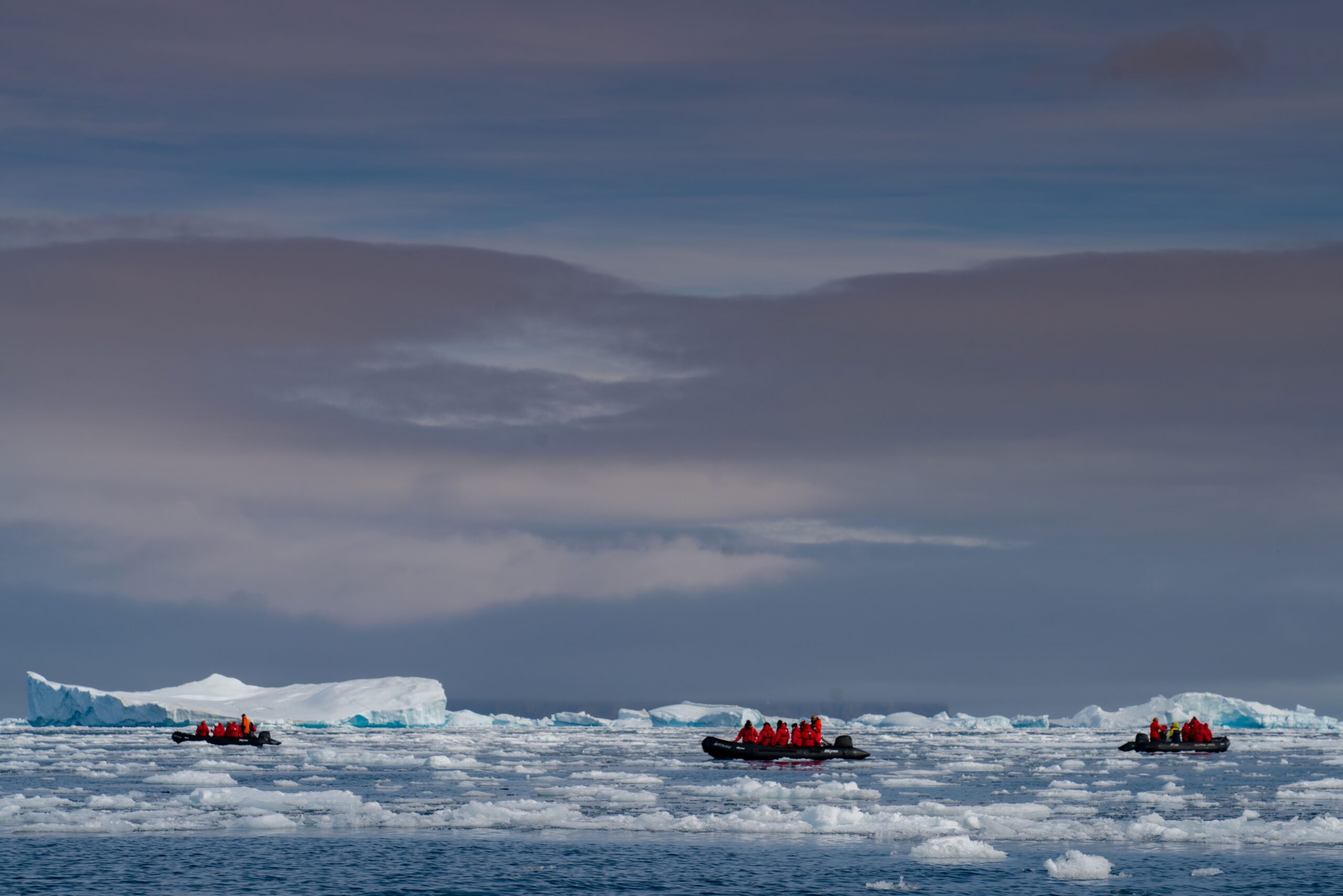
Our Zodiac boats float past Antarctic ice coverage. Authors’ photo.
The shifting landscape for Antarctica’s wildlife
The looming specter of climate change was impossible to ignore while sailing through the Southern Ocean. Though we took our journey during the Antarctic summer, the temperatures during our visit ranged from 0°-5° C (41° F). This is akin to any other autumn day in our native Netherlands. We could not help but ponder how this milder weather affects the inhabitants of this environment.
Two days after setting sail from Ushuaia, we made our first landfall at Brown Bluff beach, one of Antarctica’s northernmost points. Following a disinfectant bath that ensured no organic material from our clothes would reach the Antarctic Peninsula, we hopped on a Zodiac boat and rode to the beach. A fierce wind bit our skin, but we pressed on. Through the mist, we had our first penguin sightings.
Our arrival on the continent was immediately rewarding. We landed amidst a colony of Adélie penguins and ice rocks on the beach. The birds waddled past, seemingly indifferent to our presence. As we continued exploring the wonders of Antarctica, encounters with its unique wildlife, such as whales, seals and birds, punctuated our trip. Following the Adélie penguin colony discovery at Brown Bluff, we spotted elephant seals on President’s Head at Snow Island and witnessed a Gentoo penguin colony in Neko Harbor.

We land at Brown Bluff beach. Authors’ photo.
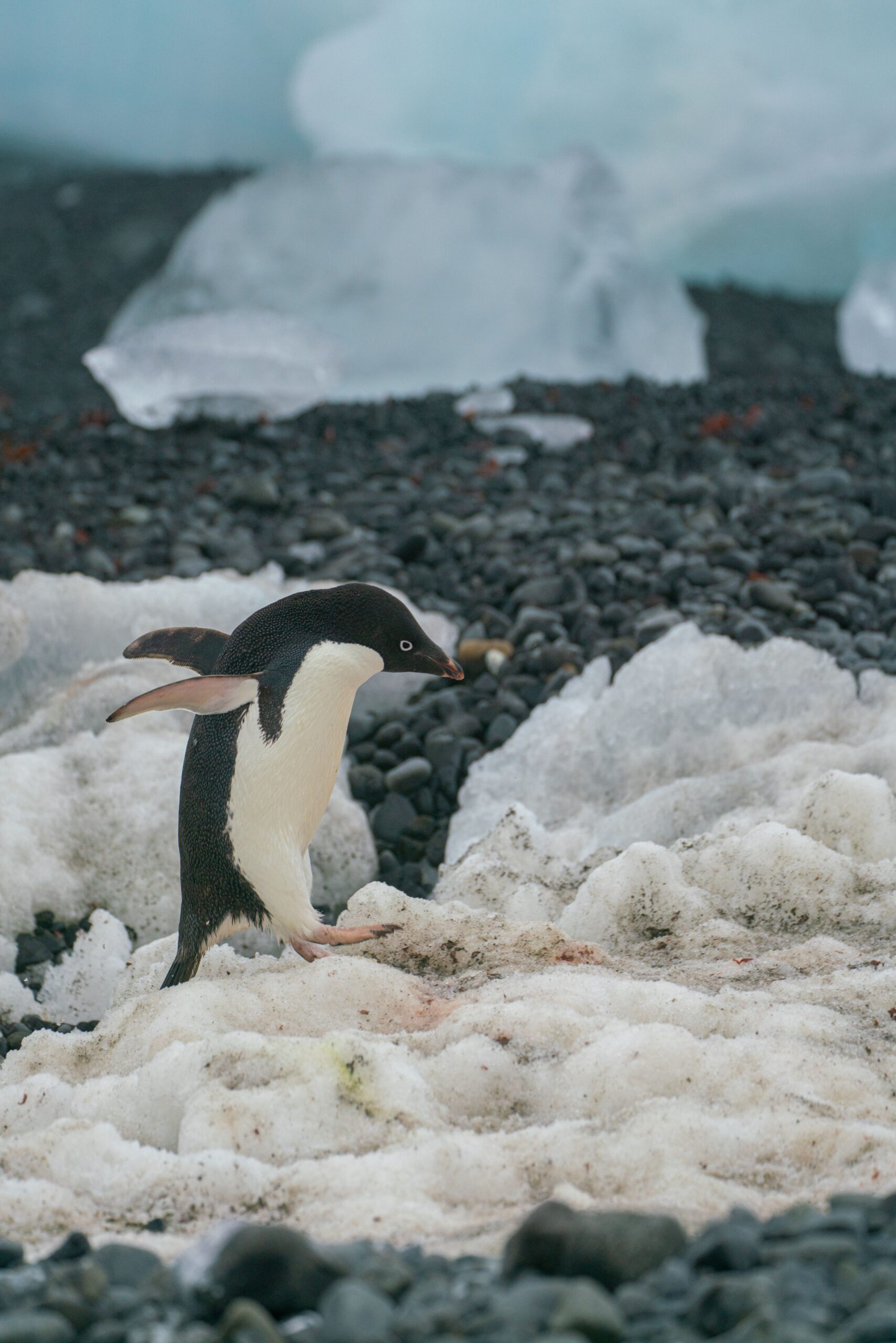
An Adélie penguin hops along the ice at Brown Bluff beach. Authors’ photo.
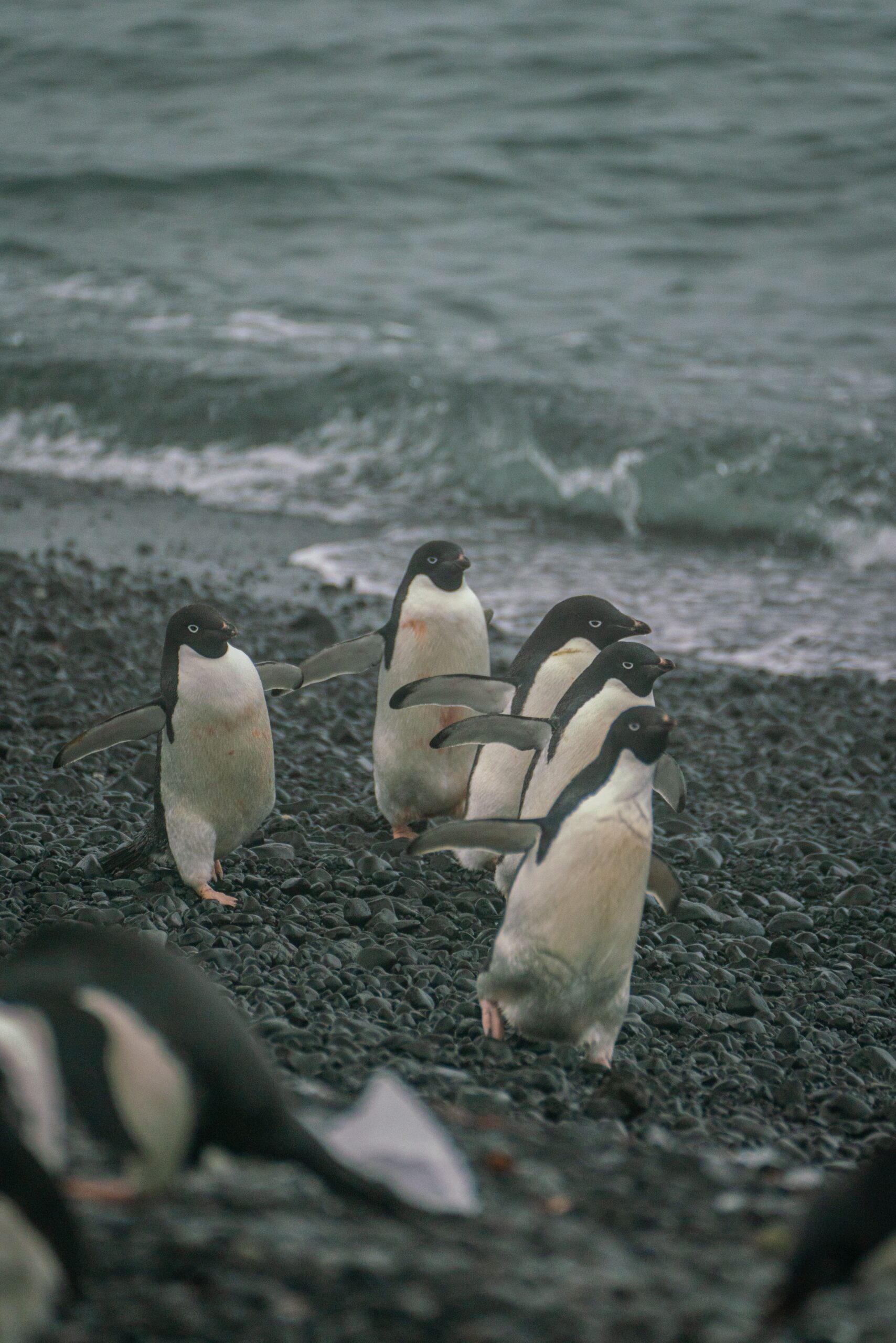
An Adélie penguin colony waddles past at Brown Bluff beach. Authors’ photo.
The scientific experts on our expedition explained to us the profound impact global warming has on these Antarctic species. Despite appearing indifferent to our presence at Brown Bluff, Adélie penguins are exceptionally vulnerable to these environmental shifts. Between 2012 and 2022, their population declined by 40%, highlighting the urgency of their situation. The warming temperatures that melt sea ice gravely endanger their survival.
Adélie penguins are not alone in facing these challenges. Emperor penguins, also adapted to colder climates, have encountered significant setbacks in recent years. With diminishing ice cover, penguins are forced to venture farther into the sea in search of prey, expending precious energy in the process. This leads to reduced food intake for themselves and their chicks, exacerbating the problem of hunger and chick mortality. Furthermore, warmer weather brings increased snowfall, burying penguin eggs and making chicks vulnerable to hypothermia. The loss of suitable nesting sites due to melting ice reduces their chance of successfully breeding.

Penguins rest on sea ice. Authors’ photo.
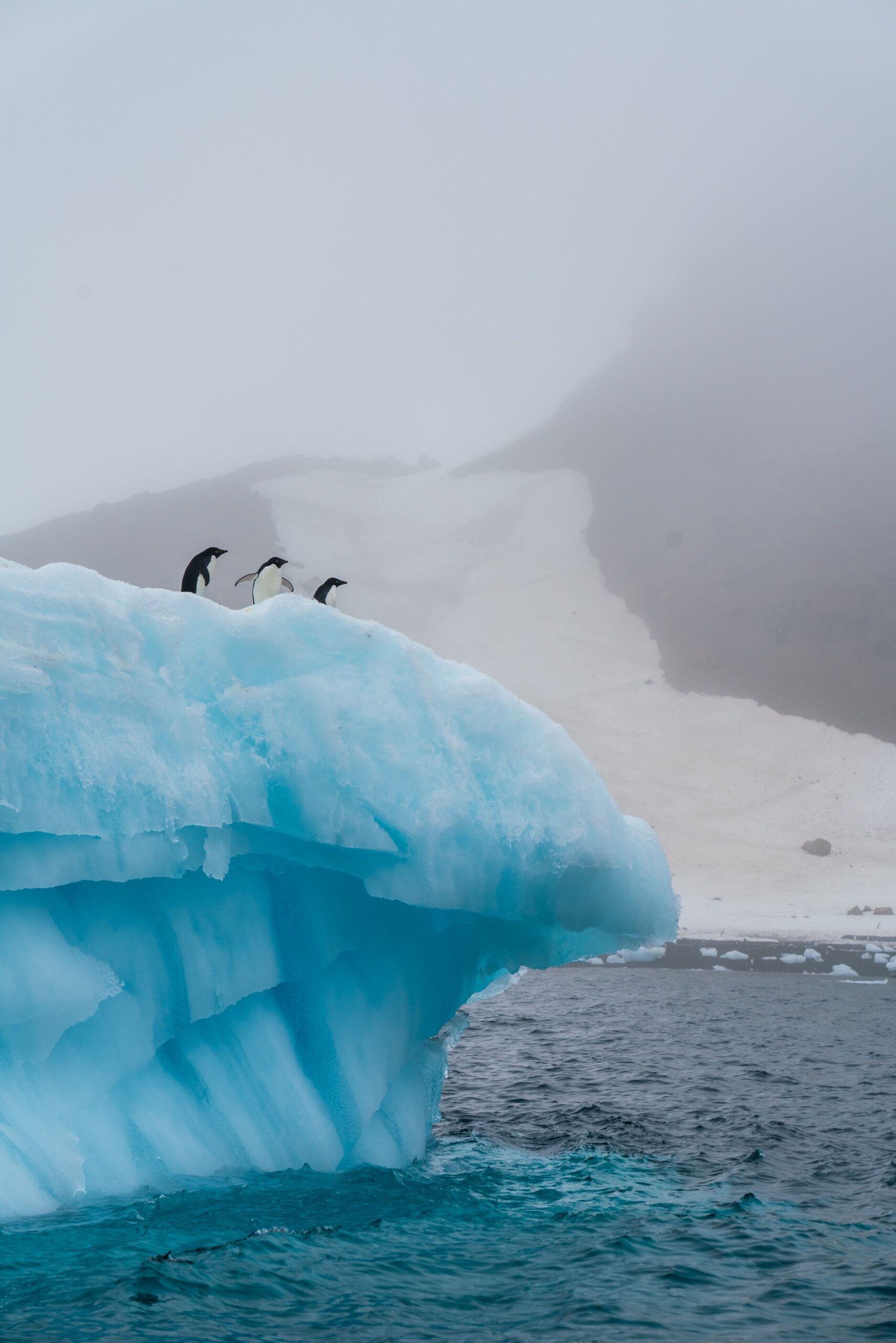
Penguins rest on sea ice near Brown Bluff. Authors’ photo.
Antarctic marine mammals are also challenged by climate change. As ocean temperatures rise, their food sources are impacted. For instance, whales, heavily reliant on krill for sustenance, are particularly vulnerable to these changes. Any disruptions in krill population or behavior cascades throughout the ecosystem, jeopardizing the entire Antarctic food chain.
Luciana Motta, a marine mammal expert and ecologist who joined our expedition cruise, shed light on the profound difficulties these animals encounter in adapting to shifting hunting grounds and habitats. Not only is global warming a factor, but increasing fishing activities and competition for food resources also threaten the broader marine ecosystem. This can potentially lead to the extinction of certain species.
With global warming increasing Antarctic temperatures, critical food sources such as krill are dwindling. This places species like the Weddell seal, leopard seal and minke whale at risk. Motta emphasized, “Effective communication of research findings is crucial to convey the urgency of conservation efforts and advocate for policy changes aimed at mitigating the impacts of climate change on Antarctic biodiversity.”
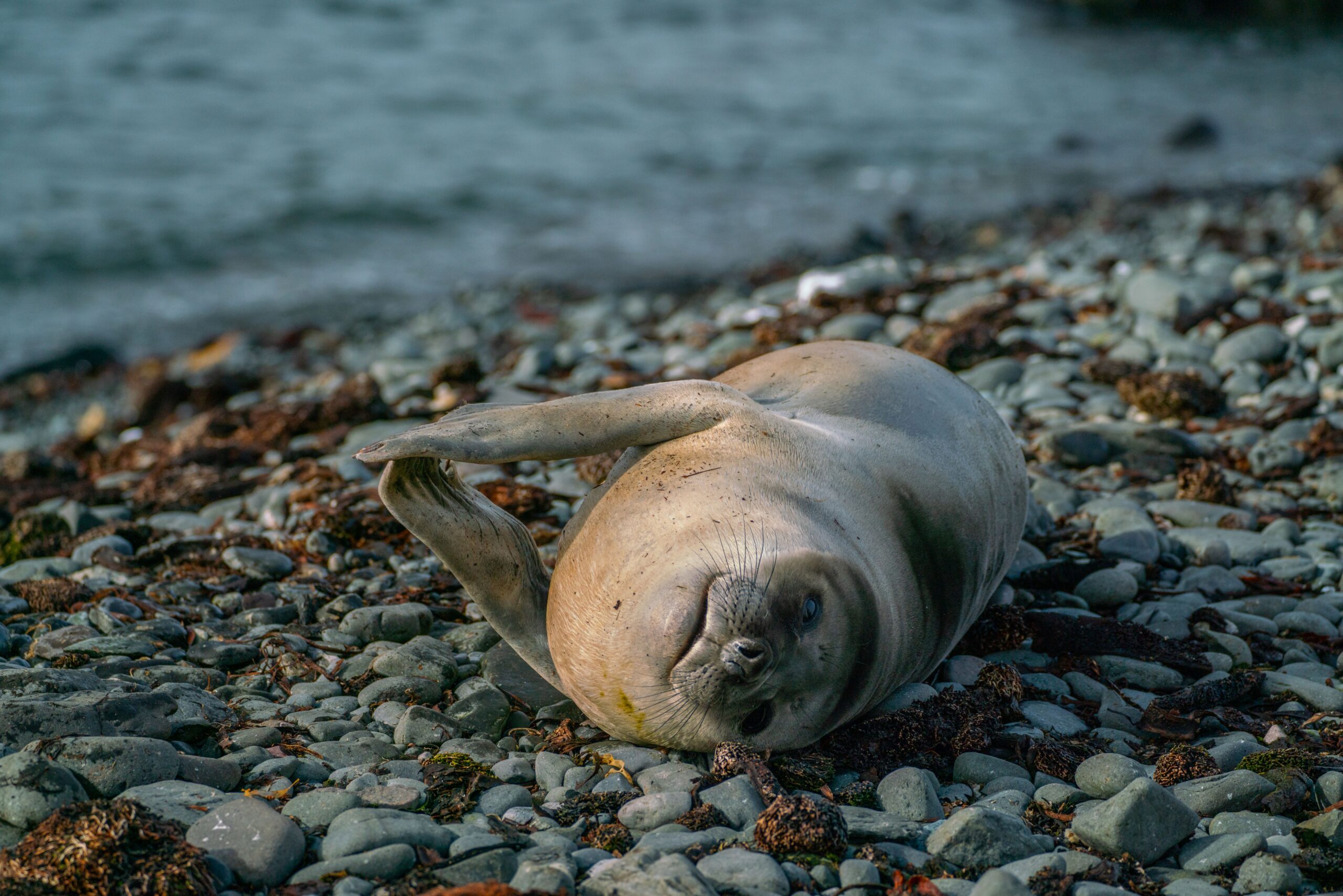
A Weddell seal lounges on the rocks. Authors’ photo.
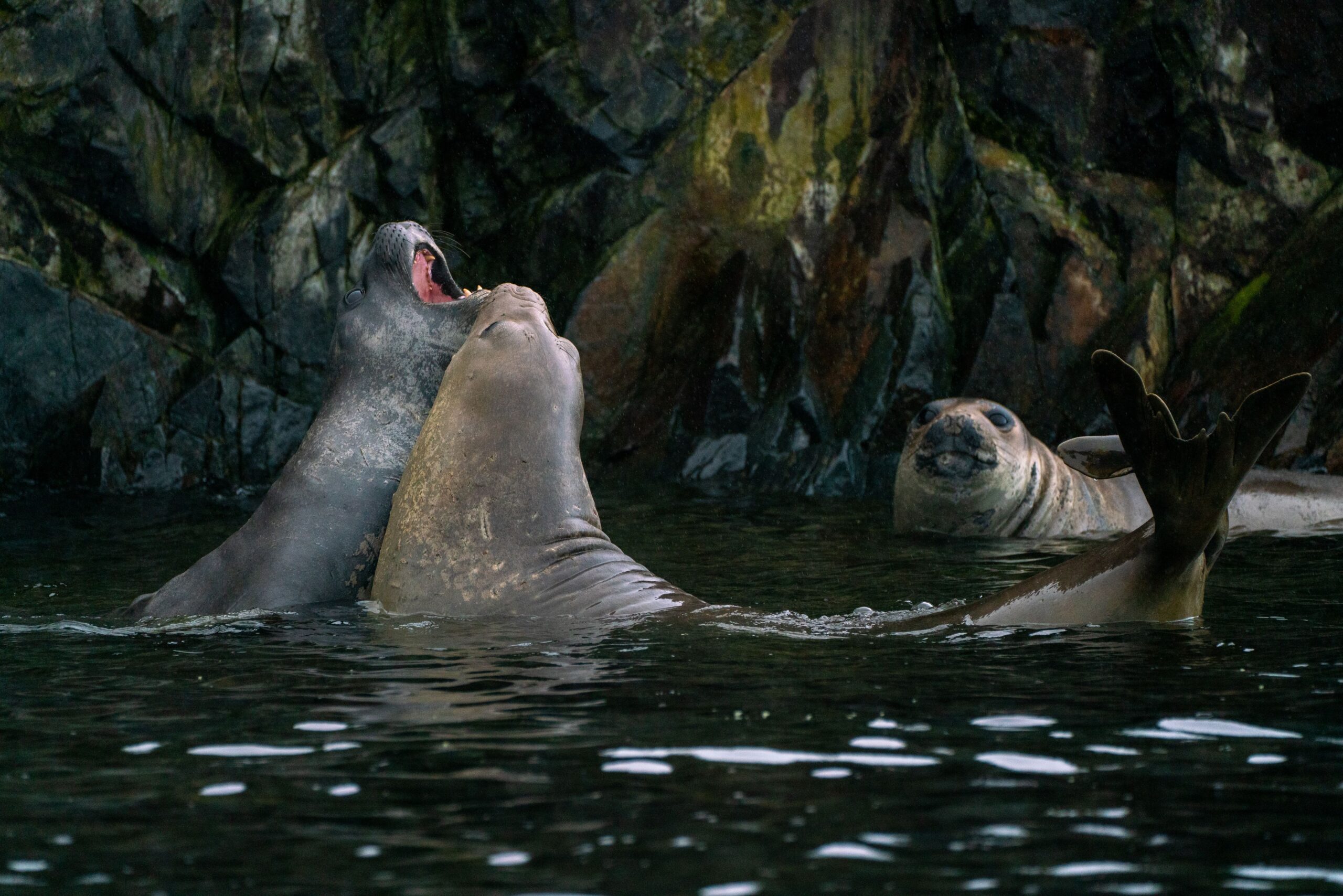
Weddell seals play in the water. Authors’ photo.
Climate change’s reach from the southern continent to our doorstep
Changes unfolding in Antarctica hold severe implications for communities worldwide. Despite this, awareness of these realities remains limited. James McClintock, a senior researcher at the University of Alabama at Birmingham (UAB) who has participated in over 30 Antarctic expedition cruises, described this disconnect: “People in the United States and elsewhere are often disconnected from the realities of Antarctica, resulting in a lack of interest. Consequently, there is widespread ignorance regarding the importance of this continent in maintaining the environmental balance for the rest of the planet. The general public is largely unaware that the developments in Antarctica today are already impacting the rest of the world.”
Low-lying island nations already grappling with limited resources are especially vulnerable to the consequences. Rising sea levels relentlessly encroach upon their shores, eroding land and menacing communities. Traditional practices like subsistence hunting, observed in regions such as Alaska and Greenland, are challenged as animals adapt to changing migration routes.
Coastal areas like Bangladesh experience intensified salinity — water saltiness — levels due to rising sea levels, which impedes agricultural productivity. Erratic weather patterns influenced by the rising temperatures in the Southern Ocean include heavy rainfall, prolonged droughts and destructive floods. These present an obstacle for farmers and worsen food insecurity.
From Alaska to Alabama, communities confront the specter of famine, relocation and erosion precipitated by these changes.
Conscious tourists can advocate for Antarctica
The surge in tourism to Antarctica has sparked concerns about its environmental impact. According to the International Association of Antarctica Tour Operators (IAATO), over 100,000 people visited Antarctica between December 2023 and March 2024. This comprised approximately 32,000 cruise tourists and 71,000 landing visitors. This number represents a 42% increase from the previous season of 2022-2023 and prompts scrutiny of its potential impacts on the Antarctic ecosystem.
IAATO stands as a beacon for responsible tourism in Antarctica. Founded in 1991 by a consortium of private tour operators, its mission is clear: to regulate and guide tourism activities in a manner that safeguards the continent’s fragile ecosystem. However, despite its noble intentions, IAATO’s guidelines remain voluntary rather than mandatory. While many adhere to its principles, some choose to operate independently. They could compromise the continent’s environment for commercial gain.
A 2022 study revealed alarming findings, indicating elevated concentrations of black carbon in the snow around popular tourist sites. This soot, originating from tourism activities, accelerates snow melting, worsening the effects of global warming. Additionally, the accidental introduction of non-native species and pathogens by tourists threatens Antarctica’s endemic flora and fauna. This occurred in 2023, when the continent experienced its first ever avian flu outbreak.
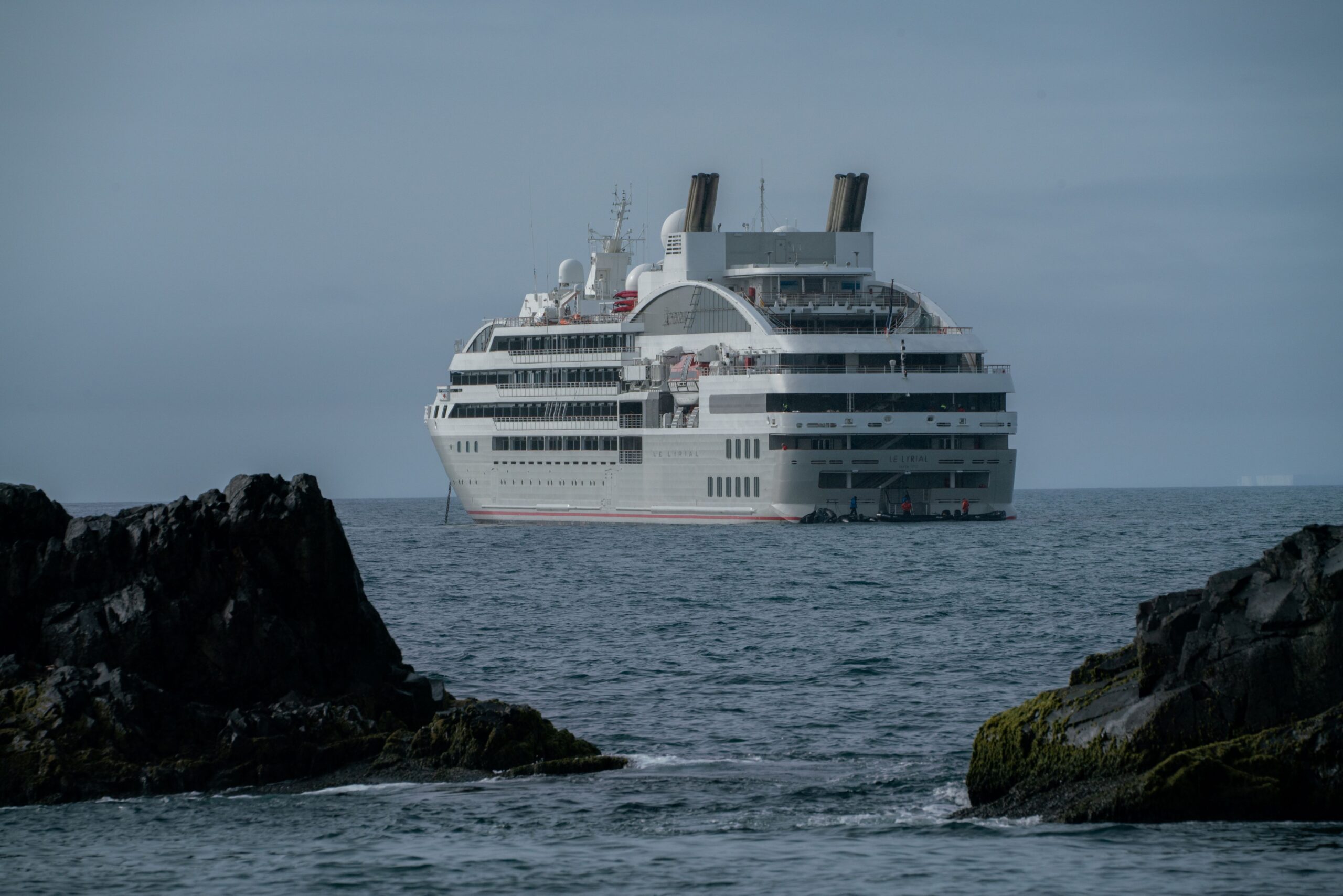
An A&K expedition cruise ship travels the ocean. Authors’ photo.
However, tourism could contribute to the conservation of Antarctica. When travelers experience the region’s breathtaking beauty and recognize its vulnerability firsthand, they become more acutely aware of the need to protect it. According to James McClintock, the experiences of passengers in expedition cruise ships serve as powerful catalysts for environmental activism; they could promote a drive for sustainable tourism practices.
Furthermore, collaboration between tourism companies and scientists amplifies the positive outcomes that the industry can have on conservation efforts. Cruise operators aid scientific research in their travels, as they enable scientists to inexpensively access remote locations that would otherwise be financially prohibitive. Additionally, the repetitive boat visits to certain sites enables them to collect longitudinal data, which offers valuable insights into the evolving state of Antarctica’s ecosystem over time.
By forming partnerships between tourism entities and researchers, Antarctica becomes more accessible for scientific study and conservation initiatives. Companies like Viking exemplify this collaborative spirit, providing a platform for scientists to conduct groundbreaking research on the continent. For example, in February 2023, its scientific team published the first paper following observations of the giant phantom jellyfish, a rarely encountered species found during one of their journeys.
Expedition cruises, such as those offered by the Lindblad Expeditions-National Geographic collaboration and A&K, host researchers aboard their vessels. These partnerships enable scientists to not only research fields like marine biology, climate science and oceanography, but to discuss their results with passengers. Similarly, companies like Swoop hold citizen science initiatives, engaging tourists in data collection and environmental monitoring. Passengers participate in projects ranging from tracking whale migrations to monitoring water quality, contributing valuable data to scientific understanding.
While tourism holds immense potential for assisting Antarctica’s conservation efforts, there is much work to be done. Tourism companies must prioritize plans for achieving net-zero carbon emissions to mitigate their environmental impact. They must also implement stringent controls on landings to prevent invasive species and diseases from infiltrating Antarctica.
It is imperative that tourist operators adhere to the regulations set forth by IAATO to ensure responsible and sustainable tourism practices. They must place limits on the number of tourists and landings permitted each day. Ultimately, no activity in Antarctica can be left unregulated if we are to preserve this environment for future generations.
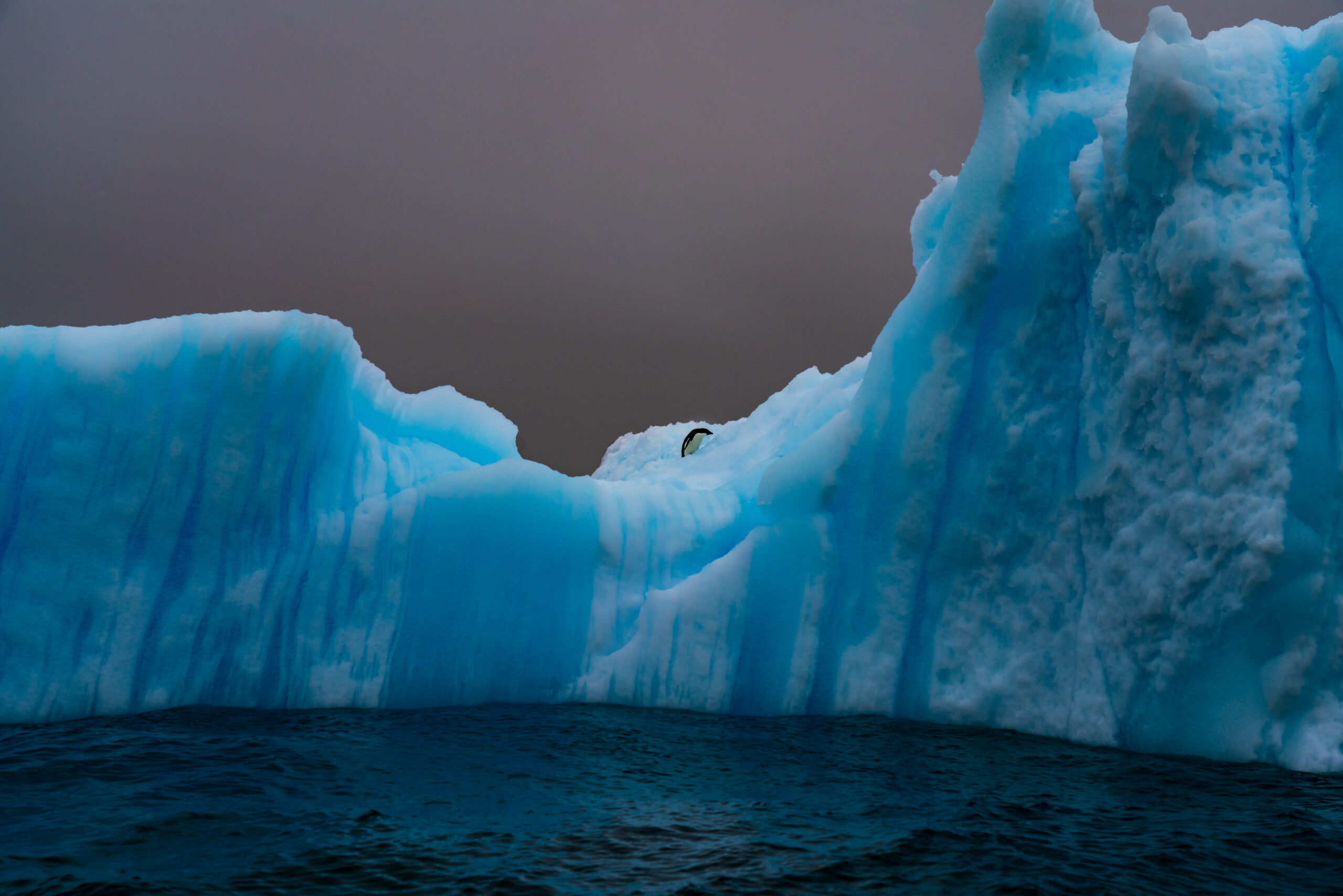
Antarctica awaits tourists. Authors’ photo.
[Lee Thompson-Kolar edited this piece.]
The views expressed in this article are the author’s own and do not necessarily reflect Fair Observer’s editorial policy.
Support Fair Observer
We rely on your support for our independence, diversity and quality.
For more than 10 years, Fair Observer has been free, fair and independent. No billionaire owns us, no advertisers control us. We are a reader-supported nonprofit. Unlike many other publications, we keep our content free for readers regardless of where they live or whether they can afford to pay. We have no paywalls and no ads.
In the post-truth era of fake news, echo chambers and filter bubbles, we publish a plurality of perspectives from around the world. Anyone can publish with us, but everyone goes through a rigorous editorial process. So, you get fact-checked, well-reasoned content instead of noise.
We publish 2,500+ voices from 90+ countries. We also conduct education and training programs
on subjects ranging from digital media and journalism to writing and critical thinking. This
doesn’t come cheap. Servers, editors, trainers and web developers cost
money.
Please consider supporting us on a regular basis as a recurring donor or a
sustaining member.
Will you support FO’s journalism?
We rely on your support for our independence, diversity and quality.



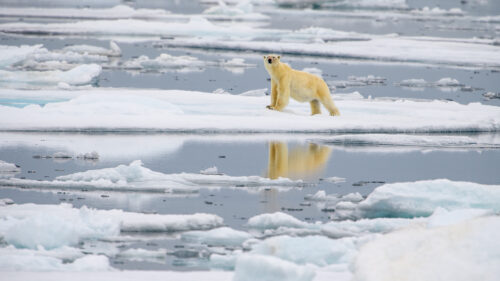

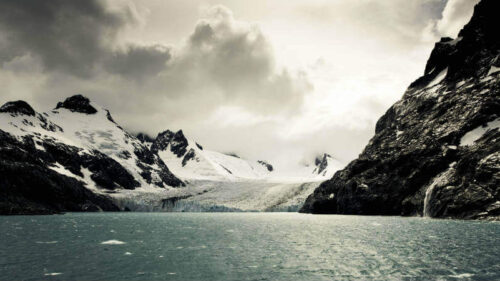

Comment